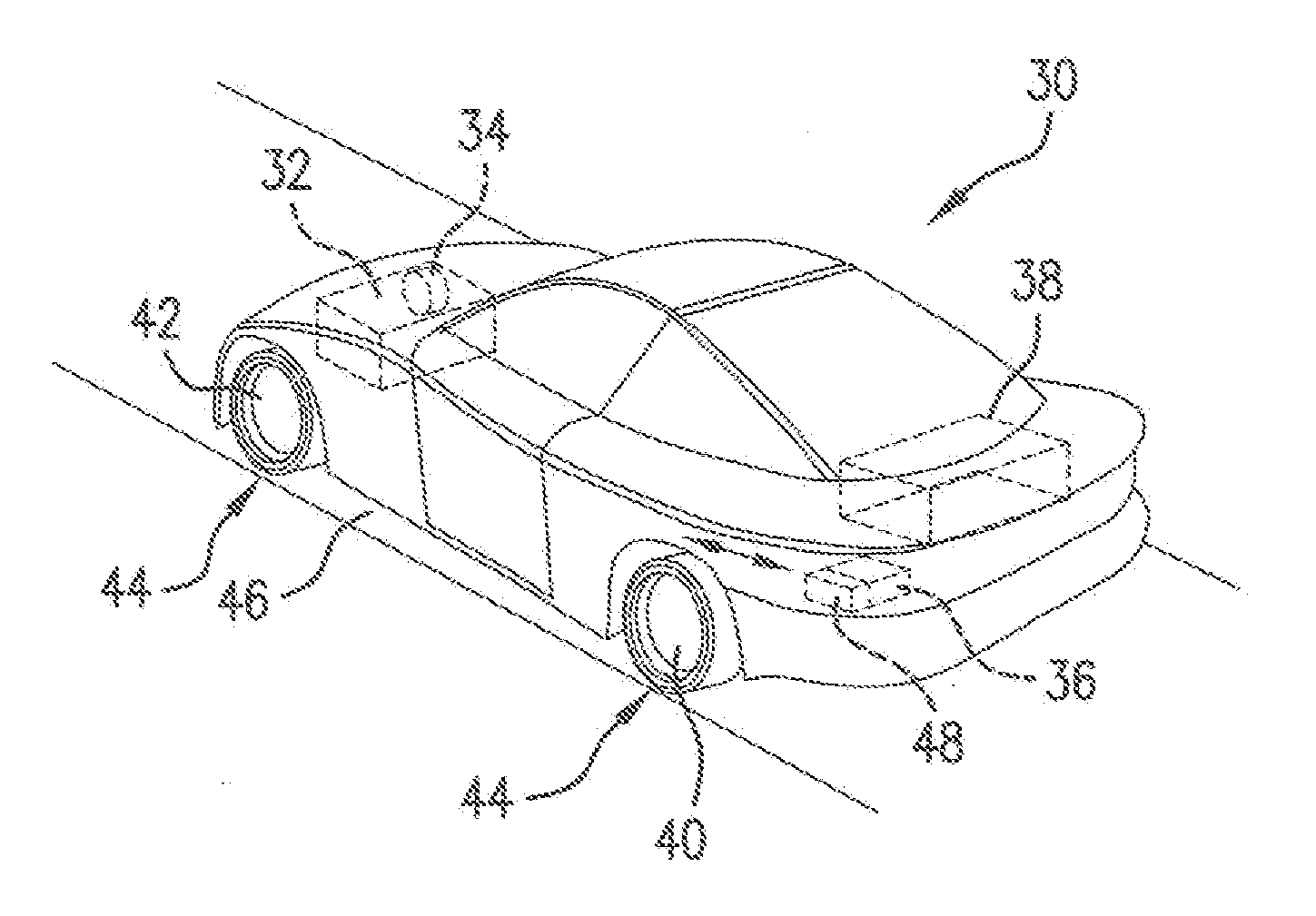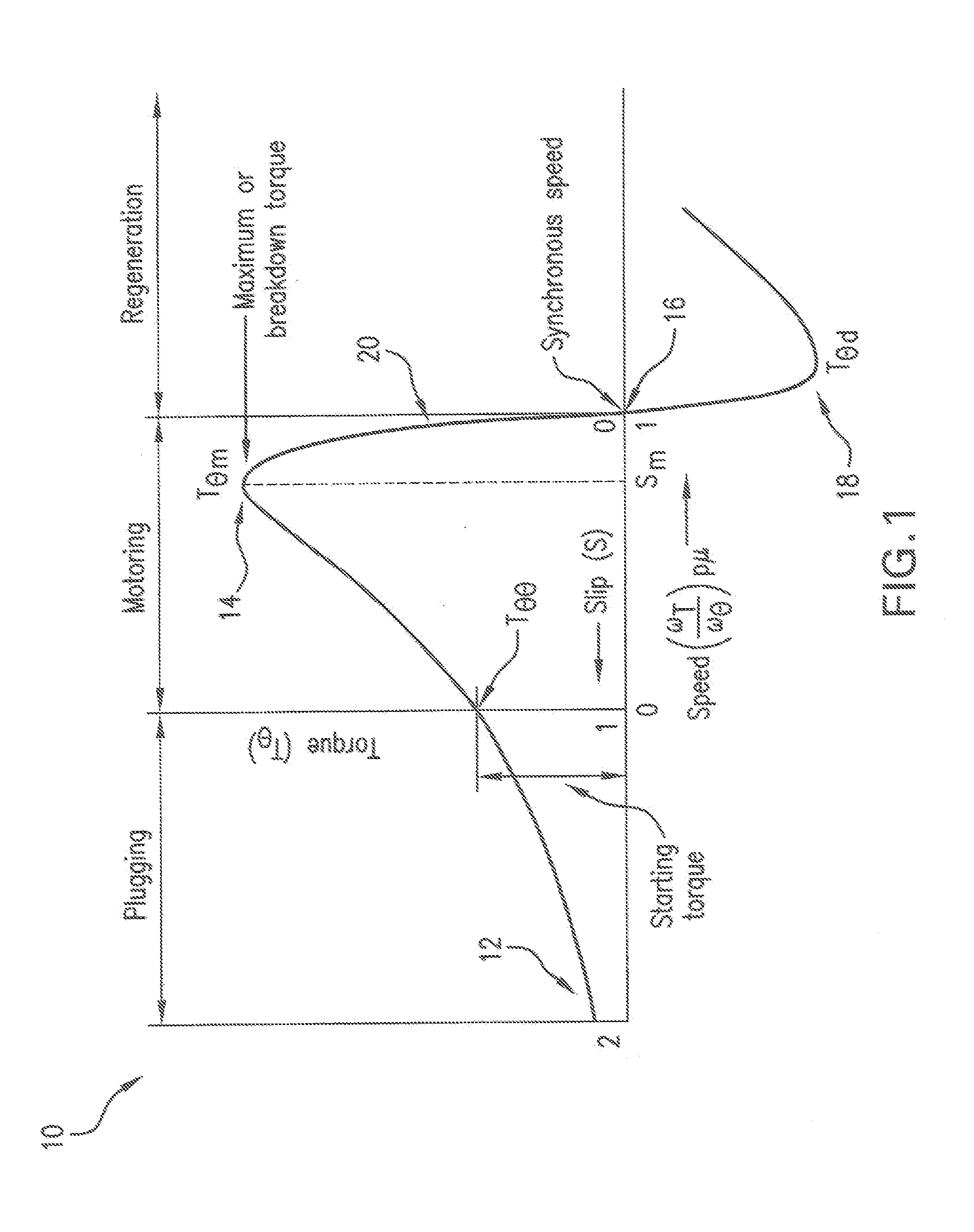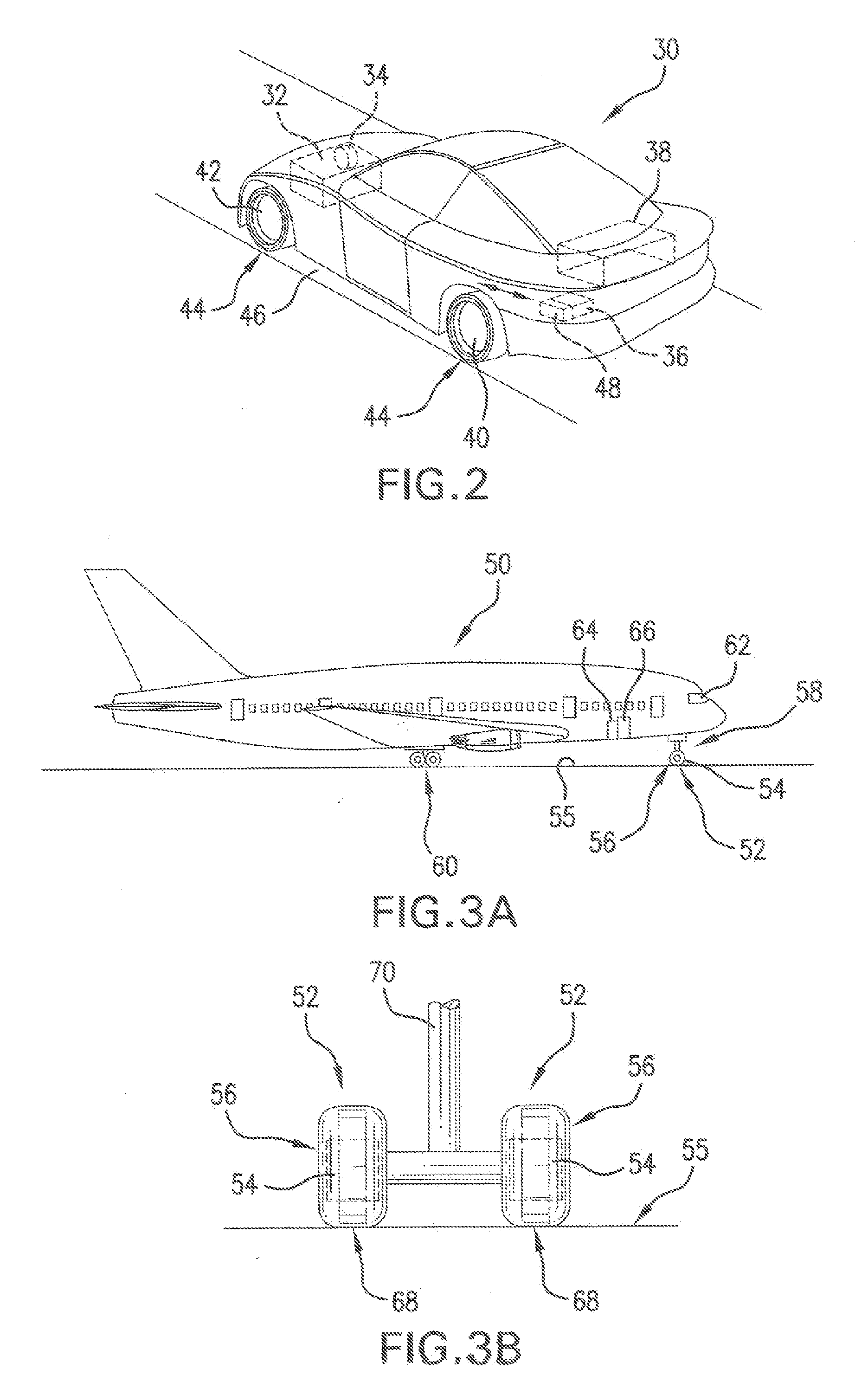Electric vehicle traction control system and method
a technology of electric vehicles and control systems, applied in process and machine control, instruments, navigation instruments, etc., can solve problems such as driver inability to drive, slippage, adversely affecting acceleration performance and driving stability,
- Summary
- Abstract
- Description
- Claims
- Application Information
AI Technical Summary
Benefits of technology
Problems solved by technology
Method used
Image
Examples
Embodiment Construction
[0023]Traction control in any vehicle, whether powered by an electric motor or another power source, requires modulating the rotational speed of the drive wheels to match the vehicle travel speed over a ground surface. Wheel rotational speed is generally reduced by braking, for example, although other methods can also reduce speed, depending on the vehicle's power source. Driving traction is produced by the force of the vehicle's wheels against the ground surface and the surface coefficient of adhesion or friction, μ. The force of a wheel, which is directed perpendicularly toward the ground surface, may be described as including a proportional force normal to the surface and a proportional force parallel to the surface. The proportional force normal to the surface is part of the traction frictional force. If a sufficiently large torque or drive force is applied from the wheel to the ground surface tangent to a contact point between the wheel and the surface, the frictional grip, or ...
PUM
 Login to View More
Login to View More Abstract
Description
Claims
Application Information
 Login to View More
Login to View More - R&D
- Intellectual Property
- Life Sciences
- Materials
- Tech Scout
- Unparalleled Data Quality
- Higher Quality Content
- 60% Fewer Hallucinations
Browse by: Latest US Patents, China's latest patents, Technical Efficacy Thesaurus, Application Domain, Technology Topic, Popular Technical Reports.
© 2025 PatSnap. All rights reserved.Legal|Privacy policy|Modern Slavery Act Transparency Statement|Sitemap|About US| Contact US: help@patsnap.com



